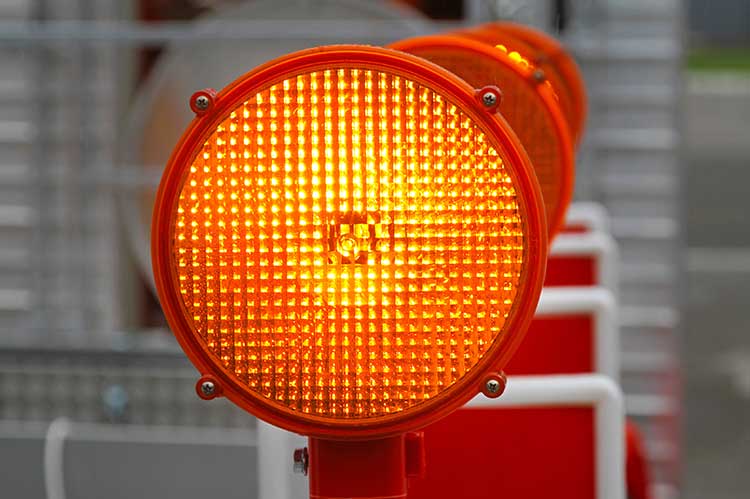 The modern commercial rooftop has become a very crowded space recently. One major concern of commercial building owners and the facility management firms that keep them operating is that with this increase in rooftop traffic comes an increase risk. It’s simple: more equipment on the roof means more roofing maintenance will be required – by more people – to keep it operating as it should. Developing a roof safety plan is a must for any commercial or multifamily residential building owner.
The modern commercial rooftop has become a very crowded space recently. One major concern of commercial building owners and the facility management firms that keep them operating is that with this increase in rooftop traffic comes an increase risk. It’s simple: more equipment on the roof means more roofing maintenance will be required – by more people – to keep it operating as it should. Developing a roof safety plan is a must for any commercial or multifamily residential building owner.
Gone are the days of “set it and forget it” when it comes to rooftops. Between repairs, routine scheduled maintenance, and system upgrades, regular foot traffic on your buildings’ roof is now a common occurrence. Protect your roofing maintenance professionals and train them on the basics of roof safety by keeping these important facts in mind:
Rooftop Safety Requires PETs
It's unfortunate that year after year, OSHA reports that accidental falls are one of the leading cause of worker deaths in the construction industry. Many of these accidental deaths could be avoided if more building management professionals established — and enforced — stricter safety procedures, after every employee and technician followed these same rules.
There's very little room for error on rooftops. That's why it should be mandatory that anyone who steps foot on your buildings' rooftop — from employees to building maintenance workers, roofing repair crews to equipment service technicians, should be instructed to stay within the safety perimeter outlined on the roof and wear some type of fall arrest system.
1. Create Procedures
While roof safety procedures may be part of some new employee training programs, employers should also incorporate basic information to all employees about who should (and should not be) up there. Policies, as well as a clear chain of command, should be established that assign responsibility to only those employees and/or building management personnel who legitimately need to be able to access the roof area.
It should also be made clear to every employee - from management to the front desk receptionist - that these individuals are the only people who can provide access to the roof. As a general rule, access doors to the roof should remain locked with a limited amount of trackable keys.
Another important point for building managers and owners to keep in mind is that not every contractor or technician who shows up at your door will be aware (or care) about safety. That's another reason to limit the number of people who can provide access to the roof — they'll be better able to evaluate whether or not a visiting technician is qualified and prepared to work safely in that environment
For those roofing maintenance and facilities management workers, employers should make sure that these individuals are thoroughly trained and demonstrate the ability to safely use equipment such as ladders, scaffolding, and fall protection systems.
2. Provide Equipment
Absolutely no one should be allowed to enter the roof space of your building without the proper safety equipment. This includes personal fall arrest systems (PFAS) or harness for each person to tie off to an anchoring device. If a contractor arrives without one, owners should be prepared to provide the necessary equipment or refuse to let the contractor on the roof.
Another way to create a safer rooftop environment is clearly designate and limit where employees and contractors are able walk. A clearly marked walking path or roof walkway system can guide those unfamiliar with the area while also protecting the majority of the roof area from inadvertent damage due to foot traffic. Installing guardrails is an additional measure that building owners can also take to keep pedestrians from wandering into a dangerous situation.
In addition to safety harnesses and other fall prevention equipment, roofing maintenance should also follow standard personal safety protocols such as wearing comfortable clothing, non-slip footwear, protective eye wear, etc. Accordingly, people should also be prepared for weather conditions that are likely more severe than they were on the ground. Winds will be stronger, rain and snow will seem heavier and temperatures will be hotter in the summer and colder in the winter. Workers should remember to dress accordingly and always notify someone inside where you are headed and check in when the work is completed.
3. Train Train Train
The good news for building owners is that much of the information needed to educate and train employees about roof safety best practices is readily available — generally free of charge or for a minimal fee — from building maintenance trade groups and organizations such as OSHA. These include informational posters, workplace signs and training training videos.
Although not every employee would (or should) set foot on your buildings roof, every employee should have a basic knowledge of what is up there and what should and should not happen there. Considering that something as seemingly harmless as an employee or maintenance person absentmindedly tossing a lit cigarette butt onto your roof could potentially melt a hole in the membrane causing thousands of dollars in water damage down the road, taking some time to educate each employee about the rooftop environment of their building is time well spent. Taking these measures will not only help prevent many accidents from occurring on your rooftop, they will also help safeguard the roof system itself from unnecessary damage.
Photo Credit: m01229





